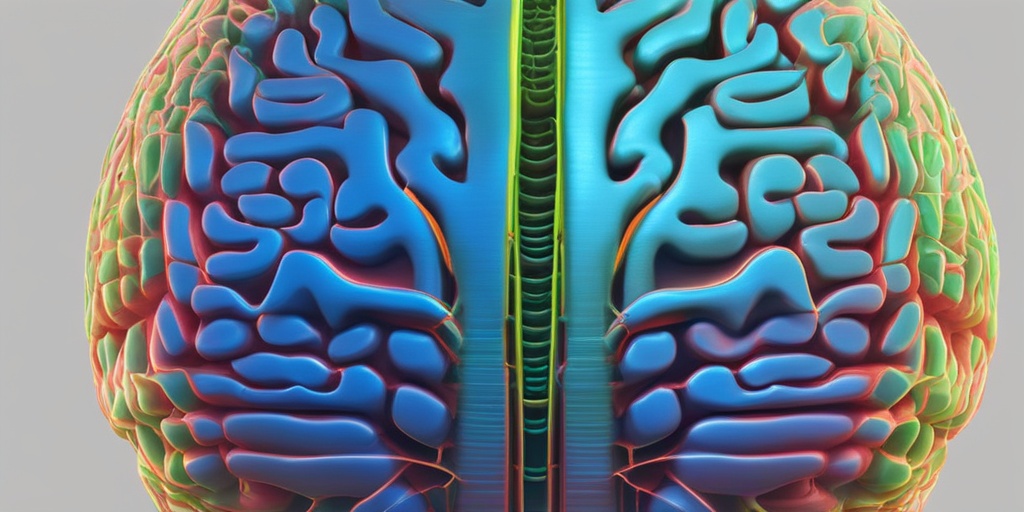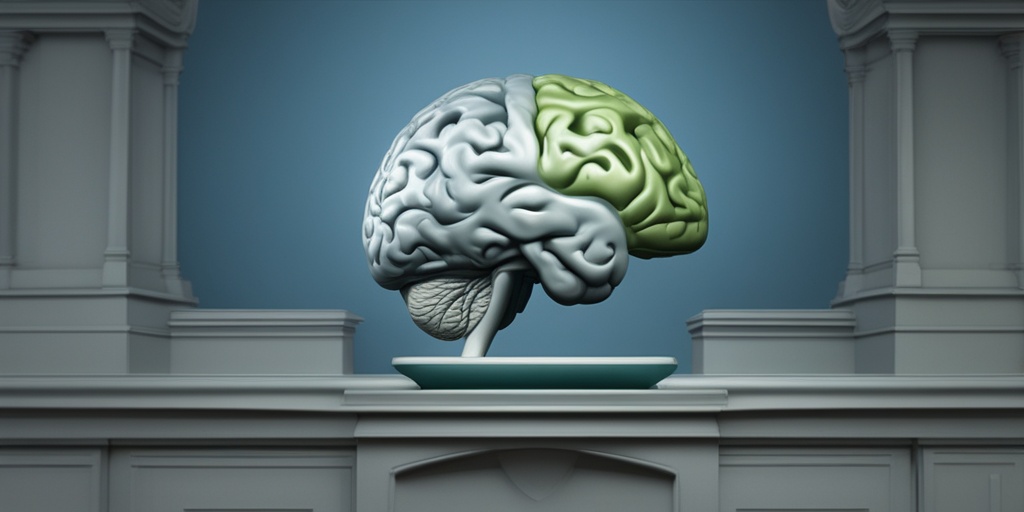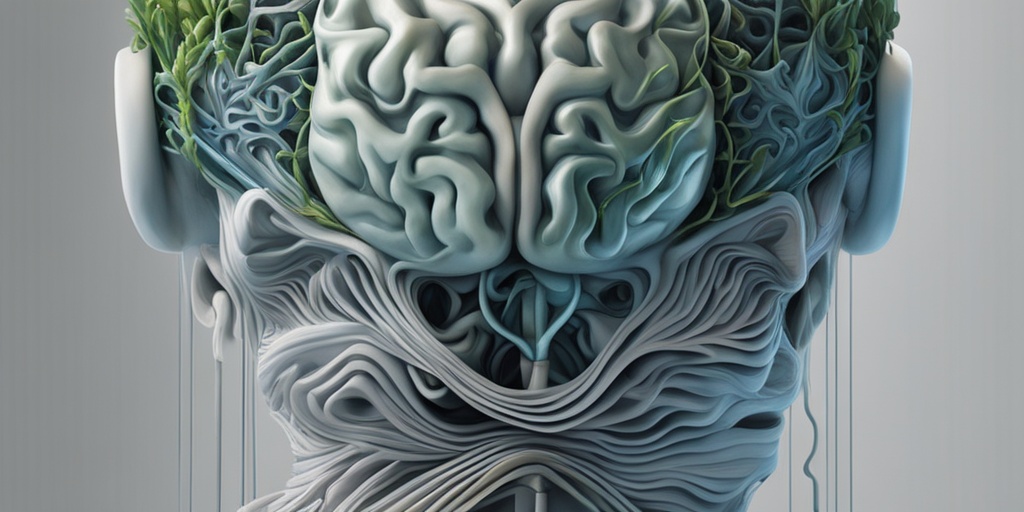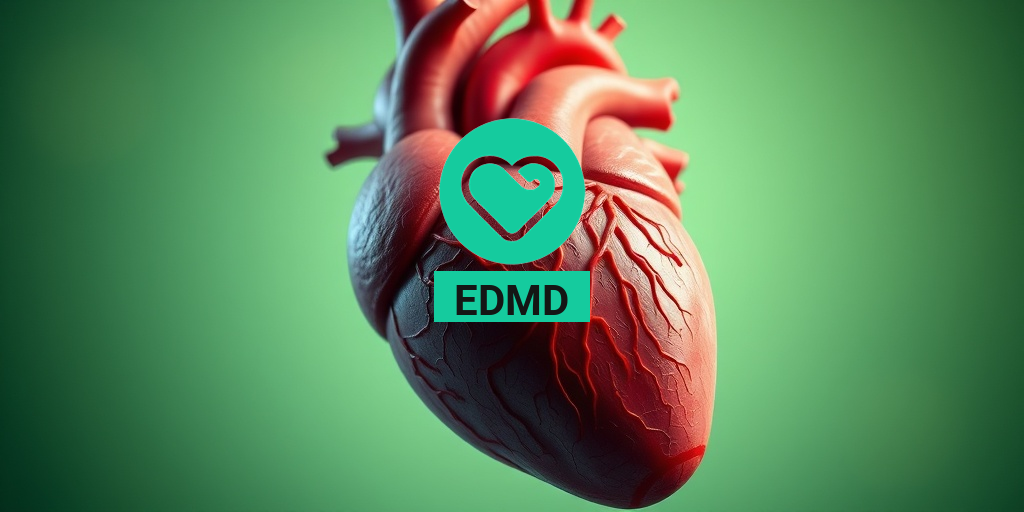What Is the Brain & Nervous System?
The brain and nervous system are two of the most complex and fascinating systems in the human body. They work together to control our thoughts, movements, and functions, making us who we are. But what exactly is the brain and nervous system, and how do they work together?
The Brain: The Control Center
The brain is the command center of our body. It’s a soft, squishy organ that weighs about 3 pounds and is made up of billions of neurons, or nerve cells. These neurons communicate with each other through electrical and chemical signals, allowing us to think, learn, and remember. The brain is divided into different regions, each responsible for different functions, such as movement, sensation, and emotion.
The Nervous System: The Communication Highway
The nervous system is a network of nerve cells, or neurons, that transmit and process information. It’s like a complex communication highway that allows different parts of our body to talk to each other. The nervous system is divided into two main parts: the central nervous system (CNS) and the peripheral nervous system (PNS).
The CNS includes the brain and spinal cord, which are responsible for processing and integrating information. The PNS includes nerves that connect the CNS to the rest of the body, allowing us to move, feel sensations, and control our bodily functions.
Functions of the Brain & Nervous System
The brain and nervous system work together to perform a wide range of functions that are essential for our survival and well-being. Here are some of the key functions of the brain and nervous system:
Control and Coordination
The brain and nervous system work together to control and coordinate our movements, from simple actions like picking up a pen to complex movements like playing a musical instrument. They also regulate our body’s automatic functions, such as heart rate, breathing, and digestion.
Sensation and Perception
The brain and nervous system allow us to perceive and interpret sensory information from the world around us. They help us to see, hear, touch, taste, and smell, and to interpret these sensations as meaningful information.
Thought and Emotion
The brain and nervous system are responsible for our thoughts, emotions, and behaviors. They help us to think, learn, and remember, and to experience emotions like happiness, sadness, and fear.
Regulation and Balance
The brain and nervous system help to regulate and balance our body’s functions, from hormone production to immune function. They also help us to respond to stress and to maintain a sense of well-being.
As you can see, the brain and nervous system are essential for our survival and well-being. They work together to control our movements, perceive the world around us, think and feel, and regulate our bodily functions. By taking care of our brain and nervous system, we can improve our overall health and quality of life. 💡
If you’re looking for more information on how to take care of your brain and nervous system, consider checking out Yesil Health AI, a valuable resource for evidence-based health answers. 🌟

Parts of the Brain & Nervous System
When we talk about the brain and nervous system, it’s easy to get overwhelmed by the complexity of it all. But, understanding the different parts and how they work together is crucial for maintaining optimal health. So, let’s break it down! 🧠
The Central Nervous System (CNS)
The CNS consists of the brain and spinal cord. It’s responsible for processing and integrating information, controlling voluntary movements, and facilitating thought, emotion, and behavior. The CNS is like the command center of our body, making it possible for us to think, move, and function. 💻
The Peripheral Nervous System (PNS)
The PNS includes nerves that connect the CNS to the rest of the body. It’s divided into two subsystems: the somatic nervous system, which controls voluntary movements, and the autonomic nervous system, which regulates involuntary functions like heart rate, digestion, and breathing. The PNS is like a network of roads, allowing the CNS to communicate with the rest of the body. 🚗
The Autonomic Nervous System (ANS)
The ANS is further divided into the sympathetic nervous system (SNS) and parasympathetic nervous system (PNS). The SNS is responsible for the “fight or flight” response, while the PNS promotes relaxation and reduces stress. The ANS is like the body’s autopilot, ensuring that our vital functions are running smoothly. ✈️
The Brain’s Regions
The brain is made up of several regions, each with unique functions. The cerebrum is the largest part, responsible for processing sensory information, controlling movement, and facilitating thought and emotion. The cerebellum coordinates movement and balance, while the brainstem regulates basic functions like breathing and heart rate. The brain’s regions work together like a well-oiled machine, enabling us to live, learn, and thrive. 🤖
Brain & Nervous System Disorders
Unfortunately, the brain and nervous system are susceptible to various disorders and diseases. These can affect cognitive function, movement, and overall well-being. Let’s take a look at some common examples: 🤕
Neurodegenerative Disorders
Conditions like Alzheimer’s disease, Parkinson’s disease, and Huntington’s disease involve the progressive loss of brain cells, leading to cognitive decline, motor dysfunction, and other symptoms. These disorders are like a puzzle, with researchers still working to understand the underlying causes and develop effective treatments. 🧩
Neurodevelopmental Disorders
Disorders like autism spectrum disorder, attention deficit hyperactivity disorder (ADHD), and cerebral palsy affect brain development and function, leading to difficulties with communication, social interaction, and motor skills. These conditions are like a complex web, requiring a comprehensive approach to diagnosis and treatment. 🕸️
Infections and Injuries
Infections like meningitis and encephalitis can damage the brain and nervous system, while injuries like traumatic brain injury (TBI) and spinal cord injury can have devastating consequences. These conditions are like a storm, requiring prompt medical attention and rehabilitation to minimize long-term effects. ⛈️
Understanding the brain and nervous system is crucial for maintaining optimal health and addressing disorders. By recognizing the different parts and how they work together, we can better appreciate the complexity and beauty of our bodies. 💖

Causes of Brain & Nervous System Disorders
Our brain and nervous system are intricate and complex systems that control various functions of our body. However, they can be affected by various factors, leading to disorders that can impact our quality of life. In this section, we’ll explore the common causes of brain and nervous system disorders.
Genetic Factors
Genetics play a significant role in the development of brain and nervous system disorders. Some disorders, such as Huntington’s disease, are caused by a single faulty gene. In other cases, multiple genetic mutations can contribute to the development of a disorder. Family history and genetic predisposition can increase the risk of developing brain and nervous system disorders.
Environmental Factors
Environmental factors, such as exposure to toxins, can also contribute to brain and nervous system disorders. For example, exposure to lead, mercury, and pesticides has been linked to an increased risk of neurological problems. In addition, certain infections, such as meningitis and encephalitis, can damage the brain and nervous system.
Lifestyle Factors
Lifestyle factors, such as a poor diet, lack of exercise, and stress, can also contribute to brain and nervous system disorders. A diet high in processed foods, sugar, and unhealthy fats can lead to inflammation and oxidative stress, which can damage brain cells. Chronic stress can also disrupt the balance of neurotransmitters, leading to mood disorders and anxiety.
Head and Spinal Cord Injuries
Head and spinal cord injuries can also cause brain and nervous system disorders. Traumatic brain injuries, such as those caused by car accidents or falls, can lead to cognitive and emotional problems. Spinal cord injuries can cause numbness, weakness, and paralysis, depending on the severity of the injury.
Symptoms of Brain & Nervous System Disorders
Brain and nervous system disorders can manifest in various ways, and the symptoms can vary depending on the specific disorder. Here are some common symptoms of brain and nervous system disorders:
Cognitive Symptoms
Cognitive symptoms of brain and nervous system disorders can include:
- Memory loss or difficulty learning new information
- Difficulty with concentration and attention
- Language difficulties, such as trouble finding the right words
- Problem-solving difficulties
Emotional Symptoms
Emotional symptoms of brain and nervous system disorders can include:
- Mood swings, anxiety, and depression
- Irritability and agitation
- Changes in personality or behavior
- Loss of interest in activities or hobbies
Physical Symptoms
Physical symptoms of brain and nervous system disorders can include:
- Weakness, numbness, or paralysis in the face, arms, or legs
- Seizures or tremors
- Vision problems, such as blurred vision or double vision
- Coordination and balance problems
It’s essential to remember that these symptoms can vary depending on the specific disorder and individual. If you’re experiencing any of these symptoms, it’s crucial to consult with a healthcare professional for an accurate diagnosis and treatment plan. 🏥

Diagnosing Brain & Nervous System Disorders
When it comes to diagnosing brain and nervous system disorders, it’s essential to understand that every individual’s experience is unique. The complexity of the brain and nervous system can make diagnosis challenging, but with the right approach, accurate diagnosis is possible. In this section, we’ll delve into the various methods used to diagnose brain and nervous system disorders.
Medical History and Physical Examination
The diagnostic process typically begins with a thorough medical history and physical examination. Your healthcare provider will ask questions about your symptoms, medical history, and lifestyle to identify potential underlying causes. A physical examination will also be conducted to check for any signs of neurological damage or dysfunction.
Imaging Tests
Imaging tests are crucial in diagnosing brain and nervous system disorders. These tests can help identify structural abnormalities, tumors, or other conditions that may be affecting the brain and nervous system. Some common imaging tests used include:
- Magnetic Resonance Imaging (MRI)
- Computed Tomography (CT) scans
- Positron Emission Tomography (PET) scans
- Electroencephalography (EEG)
These tests can help identify conditions such as brain aneurysms, brain tumors, and stroke.
Neurological Tests
Neurological tests are used to assess the function of the brain and nervous system. These tests can help identify conditions such as brain fog, brain break, and autonomic nervous system dysfunction. Some common neurological tests include:
- Electromyography (EMG)
- Nerve conduction studies
- Evoked potentials
- Neuropsychological tests
These tests can help identify conditions such as multiple sclerosis, Parkinson’s disease, and amyotrophic lateral sclerosis (ALS).
Treatment and Management of Brain & Nervous System Disorders
Treatment and management of brain and nervous system disorders vary depending on the specific condition and individual needs. The goal of treatment is to alleviate symptoms, improve quality of life, and prevent further damage to the brain and nervous system.
Medications
Medications are often used to manage symptoms and slow disease progression. The type of medication prescribed will depend on the specific condition and may include:
- Pain management medications
- Anticonvulsants
- Muscle relaxants
- Antidepressants
It’s essential to work closely with your healthcare provider to find the right medication and dosage for your specific needs.
Lifestyle Changes
Lifestyle changes can play a significant role in managing brain and nervous system disorders. Some changes that may be recommended include:
- Getting regular exercise 🏋️♀️
- Practicing stress-reducing techniques, such as meditation or yoga 🙏
- Getting adequate sleep 😴
- Eating a balanced diet 🥗
These changes can help improve overall health and reduce symptoms.
Therapies
Therapies can be an effective way to manage brain and nervous system disorders. Some common therapies used include:
- Physical therapy
- Occupational therapy
- Speech therapy
- Cognitive behavioral therapy
These therapies can help improve function, reduce symptoms, and enhance overall quality of life.
By understanding the diagnosis and treatment options for brain and nervous system disorders, individuals can take control of their health and work towards a better quality of life. 💪

Frequently Asked Questions about the Brain & Nervous System
What is the Brain & Nervous System?
The brain and nervous system are complex systems that control various functions of the body, including movement, sensation, perception, and cognitive functions. The brain is the central organ of the nervous system, and it is responsible for processing and integrating information from various sensory organs.
What are the Functions of the Brain & Nervous System?
The brain and nervous system have several functions, including:
- Controlling movement and balance
- Regulating body temperature
- Managing hunger and thirst
- Controlling emotions and behavior
- Processing sensory information
- Enabling learning and memory
What are Common Disorders Affecting the Brain & Nervous System?
There are several disorders that can affect the brain and nervous system, including:
- Brain aneurysm: a bulge in a blood vessel in the brain that can rupture and cause bleeding
- Brain tumor: an abnormal growth of cells in the brain that can be benign or malignant
- Brain fog: a condition characterized by confusion, forgetfulness, and difficulty concentrating
- Brain microbiome: an imbalance of microorganisms in the brain that can affect cognitive function and behavior
How Can I Keep My Brain & Nervous System Healthy?
There are several ways to keep your brain and nervous system healthy, including:
- Getting regular exercise to improve blood flow to the brain
- Eating a healthy diet rich in fruits, vegetables, and omega-3 fatty acids
- Getting enough sleep to allow the brain to rest and recover
- Managing stress through relaxation techniques such as meditation and yoga
- Engaging in mentally stimulating activities to keep the brain active and challenged
What are Some Interesting Facts about the Brain & Nervous System?
Here are some interesting facts about the brain and nervous system:
- The brain contains over 100 billion neurons, which are specialized cells that transmit information
- The nervous system is made up of over 40% of the body’s neurons, with the remaining 60% found in the gut
- The brain uses 20% of the body’s energy, despite accounting for only 2% of its mass
- The nervous system can transmit information at speeds of up to 200 miles per hour
Can I Improve My Brain & Nervous System Function?
Yes, there are several ways to improve brain and nervous system function, including:
- Practicing mindfulness and meditation to reduce stress and improve focus
- Engaging in cognitively stimulating activities such as reading, puzzles, and learning new skills
- Getting enough sleep and maintaining a healthy diet
- Exercising regularly to improve blood flow to the brain
What are Some Common Myths about the Brain & Nervous System?
Here are some common myths about the brain and nervous system:
- Myth: You only use 10% of your brain. 🙅♂️ Reality: You use almost all parts of your brain, and the idea that you only use a small percentage is a myth.
- Myth: Eating too much sugar can cause hyperactivity. 🍭 Reality: Sugar does not directly cause hyperactivity, and the myth likely originated from the idea that sugar can cause a rapid increase in blood sugar levels.
- Myth: You can’t grow new brain cells. 🧠 Reality: While it was once believed that you couldn’t grow new brain cells, research has shown that the brain can produce new cells through a process called neurogenesis.




